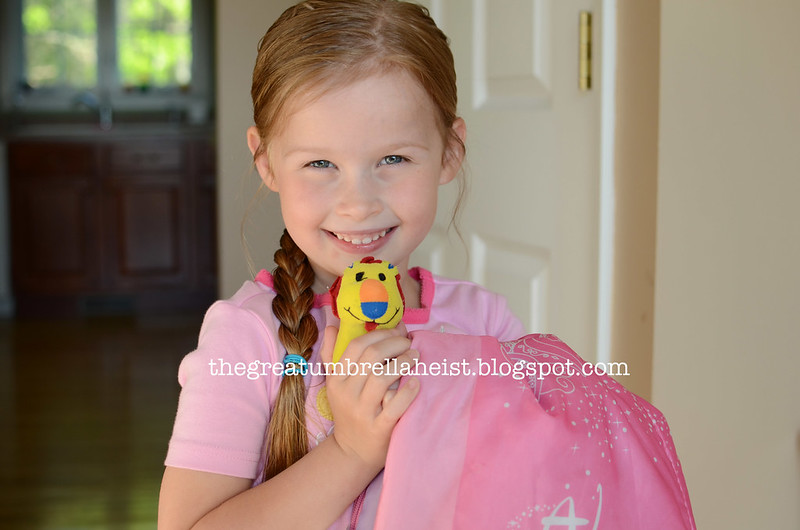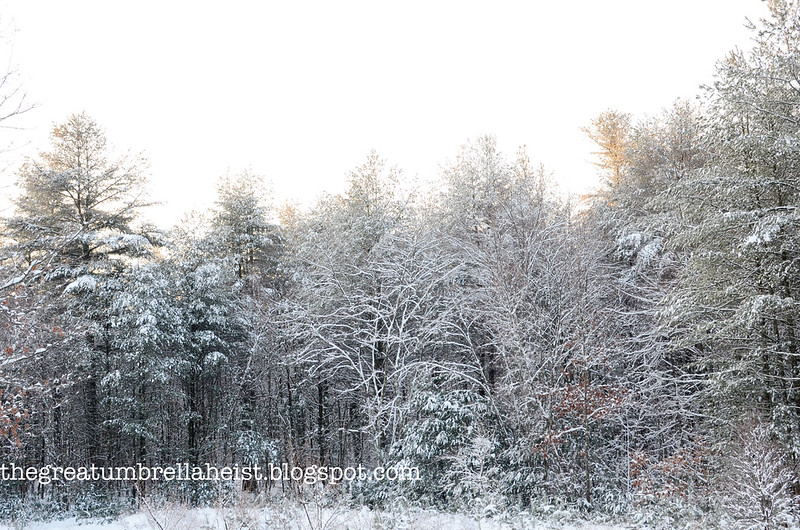Turn off the onboard flash
The direct light from an onboard camera flash is simply too harsh and leaves unappealing results. You are left with a those tell-tale shadows and a brightly lit subject with an overly dark background. Turn it off. You don't need to use it. There are alternatives, which I'll discuss later. There are reasons why you'll never see professionals using that flash that comes with the camera.
Your first question is probably how do I turn off the flash? which brings me to. . .
Read the manual for your camera
I know how dry and boring a camera manual can be. I've read mine. I know. But you won't be able to learn what all those buttons and dials and menu options do unless you read your manual. I suggest taking it a little bit at a time. An alternative to the camera manual is a field guide. Check out Amazon and you'll see what I'm talking about. (I had the one by David Busch for my D50 and found it to be quite helpful.)
Watch your composition
How you frame your subject can make or break a photo. I don't want to make blanket statements such as "always follow the rule of thirds" because sometimes you shouldn't but you really need to pay attention to placement. This not only applies to the subject but what's in the background. Hey, that's a cute picture of Billy but why is there a branch growing out of his head? There are entire books written about composition so I won't go into details but take this as a reminder to watch your composition and background.

I try to keep my backgrounds clean. If you have the option to move people, do so. For example, after the girls's dance recital, I watched parents and grandparents snapping photos of the dancers in the crowded lobby. I cringed. We left the building and walked past more parents and grandparents snapping photos on the crowded walkway in the full sun. I escorted my crew to the side of the building, which was empty space and in the shade.

(No tips for cooperation from sassy 7 year olds.)
So here's how I take photos - I place my subject in the frame and then my eyes scan the entire frame, in a clockwise motion before I press the shutter. It's something that only takes 2-3 seconds and something I do without thinking about it.
Also, watch the dreaded limb chop. There's nothing worse than cutting off body parts - my pet peeve is feet. Obviously, not every photo is going to be full body so try to follow the general rule of avoiding cutting off the body at a joint - ankles, knees, elbows, etc.
Watch the light
Admittedly, this is a tough one that will take practice. Not only will light help you avoid using your onboard flash but learning how to photograph with what light is available will improve the look of your photos.

I used to dread photographing people outside if the sun was out and then I learned out to photograph in the sun. It's still not a favorite or ideal lighting situation but I can work with it now.

Read books/websites
The most recommended book, especially for those struggling with shooting in manual mode, is Understanding Exposure by Bryan Peterson. If you're concerned with purchasing books that won't be helpful, check out your local library, which will give you the option of borrowing or borrowing before you buy. You can also purchase used copies of books on Amazon.
Don't overlook the fact that there's an abundance of knowledge available to you free on the internet. Not all tips are useful - my favorite being "want better photos? buy a better camera" - but you can still find plenty of helpful tips even after sifting through the bad advice.
Add a Speedlight
So, you've turned off your onboard flash but there are times when you still need more light. This is when I suggest investing in a Speedlight. They can be pricey (you'll want one with a swivel head) but you'll get your money's worth from it. I've been using the same Speedlight for more than 5 years ago without complaint or issue. Click here to read my post on what a Speedlight can do for you.

Replace your kit lens
There is some truth to the statement that great quality photos come from better equipment. But better doesn't always have to mean more expensive. If you shoot Nikon, there are a few great, inexpensive lens options available to you. The first is the Nikon 35mm f/1.8 lens, which sells for about $200. I've had this lens for a loooong time - maybe almost as long as my Speedlight - and it has definitely served me well. Another option is the Nikon 50mm f/1.8 lens, which sells for $100-$200 depending on if you need the AF-S version. I don't own this lens but I've heard others rave about it and it has great reviews on Amazon. (Before you purchase any lens, be sure to check that it is compatible with your camera. Some cameras do not have built in motors for auto-focus and require specific lenses or you'll be stuck trying to manually focus, which is different from shooting manually and something you won't want to do.)
Keep in mind, too, that there is a pretty big market for used photography equipment. Not only do you have photographers who upgrade their equipment and sell what they are no longer using, you have those who pick up for photography as a hobby, like running, and then quickly lose steam and decide to get some of their money back.
Avoid trends
Remember selective coloring? Excessive, unnecessary tilting? Blowing out whites during black & white conversions?
Be yourself. Do your own thing. If something looks trendy (everyone is doing it), walk away. It will look cool for about 5 minutes and then you'll say, "Why did I do that?"
Shoot in manual
I know it might seem intimidating but move that dial from A to M and see what happens. What's the worse that can happen? You have to delete some photos? So what. Not a big deal. Shooting in manual gives you full creative control over your photos. And while your camera is smart, it's not that smart.
PRACTICE
Practice, practice and then practice some more. Some people are gifted with certain talents with others of us have to really learn that skill. Take musicians for example. I've always been in awe of those who can play by ear. When I wanted to play an instrument, I had to practice, practice, practice and while I may have been decent, I was no musical superstar.
Practice. You'll get there.


8 comments:
Terrific post, Sarah! I always laugh when people ask me what kind of camera I have. No one ever asks a chef what kind of stove or pans he used to cook a great meal! LOL
I know a lot of photo people turn their noses up at using a Speedlight but in a small house during a dark New England winter, it is a necessity! I love mine.
Great post and great tips. I always give the Triangle "Lecture" when people ask about shooting in manual. And practice cannot be overstated.
I think I learned most about my style and my camera when I got my LensBaby. You have no choice but to try and fail and try and try again.
Love your photography posts, thank you! My question is, what is the difference in your opinion between shooting in av and shooting in manual? I feel like in manual I am still relying on the camera to tell me what shutter speed to use, it it just takes not time to meter. Thoughts? And thank you!
Karen - To some extent, you are relying on the camera to tell you the shutter speed when you shoot in manual. I don't always do what the camera tells me to do though. In certain lighting situations, I'll meter down a little b/c I know my camera tends to overexpose in certain light. Or I'll move close to someone to spot meter and set the shutter speed but then step back to take the picture.
Last year (or maybe the year before) I was attempting to take pictures of the girls while on a carousel with them. B/c the light was always changing, I threw the camera on A mode but none of the pictures came out - the camera couldn't read the light fast enough. The ones I took in manual came out better.
Thanks Sarah! I love your photography posts! Have you done a previous post on using your speedlight? Or would you think of doing one? I have one, but I never use it. Every time I do, the results are less than desirable.
Hi Kandice - No, I don't have a post on using the Speedlight. Usually I keep mine on TTL, have my ISO at 200, SS at 80 and aperture at 3.5. I may have to adjust the speedlight up or down depending on how much light I have. If it's really dark, I'll increase my ISO. Don't like to shoot wider than a 3.5 with my 35mm - usually too soft. Hope this helps a little.
Thanks!
Thank you so much for this. It's hard to be concise and modest in a how-to post.
Post a Comment